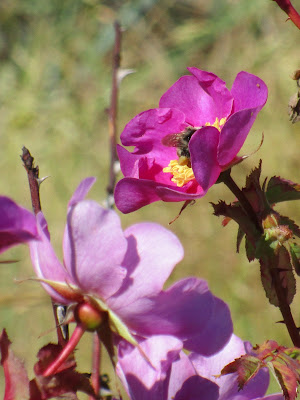Welcome sign to the Ohio River Islands National Wildlife Refuge, near Williamstown, West Virginia
The Visitor Center
The main lobby of the visitor center
The mussels are somewhat difficult to see in the picture but there are several in this display tank.
Samples of a variety of different shells of mollusks found in the Ohio River
Examples of the shells that had holes drilled in them to show how the buttons were made
There were also small aquarium tanks with fish and turtles that are common to this part of the Ohio River. The turtle above is an Eastern Spiny Soft Shell Turtle. These are aggressive like snapping turtles and can live up to 25 years.
On one of the bulletin boards was this poster about Lightning Bugs, Fireflies or Glow Worms. We do not have these in the Pacific Northwest and I am fascinated by them each time I go to Marietta at this time of year. Around twilight and early dusk these little flying insects come out and there are sparkles of light near the grass all around, like fairy lights.
Outside along one of the many walking trails was this display of pollinator habitats. Mostly wooden boxes with holes for the bees to enter and use like a hive. Because bees have been diminishing in number these habitats are proving to be very important in the pollination process of plants.
The flowers pictured are some that we do not have here in the northwest. There were other more universally common flowers that can be found probably all over the United States and perhaps even in other countries but these were decidedly different and fun to see.
Butterfly Weed, a great bee attraction, the bush was covered in them
Large Pink Daisies
Milkweed
Both the orange Butterfly weed and the Milkweed are host plants for the Monarch butterflies. Large numbers of Monarch butterflies migrate to areas where these plants grow.



























































